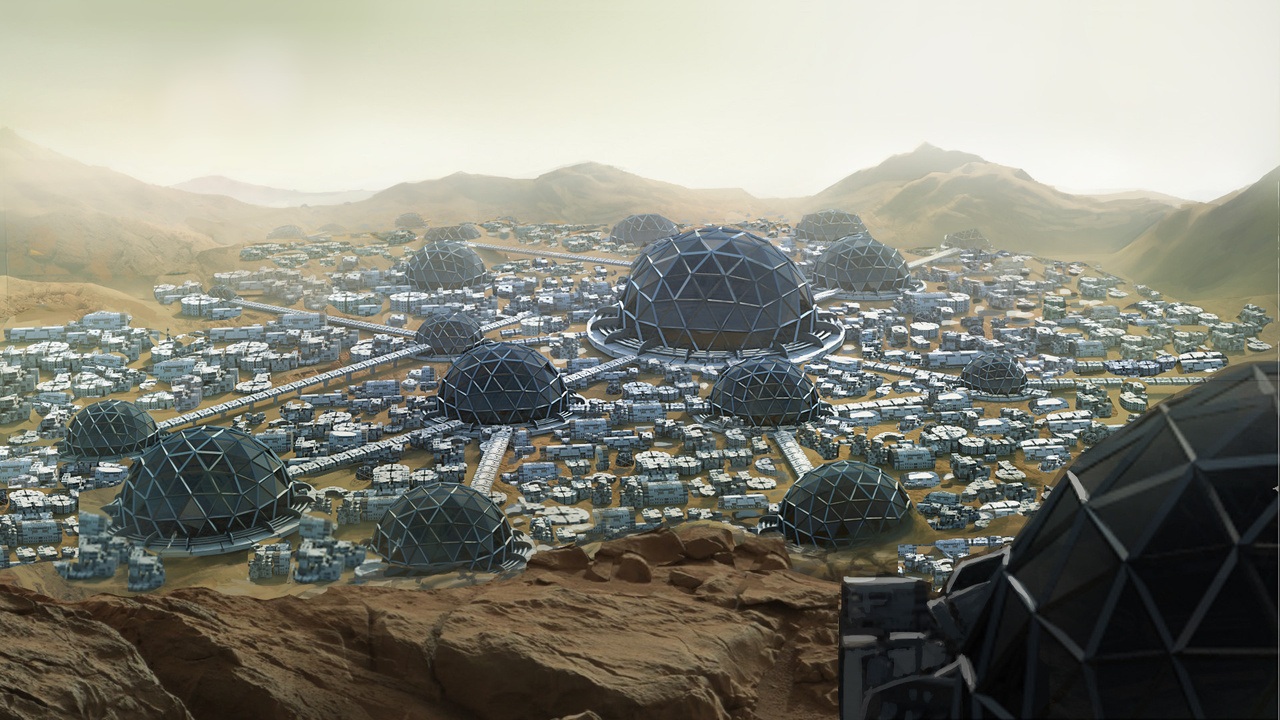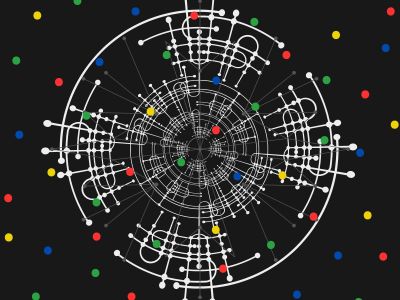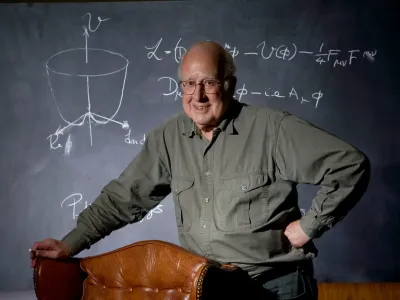New Technologies That Are Changing The World

The 21st century has seen a rapid advancement in technology, leading to a wide range of new ideas that have the potential to change the world in significant ways. These ideas cover a wide range of fields, from artificial intelligence and quantum computing to climate change and biotechnology. They have the potential to revolutionize industries, improve human life, and solve some of the world's most pressing problems. However, these ideas also raise many challenges and concerns that must be addressed in order to fully realize their potential. These technological evolutions we are experiencing are increasing at a higher rate than ever before in any past centuries, technological evolution is progressive evolution, about which we talk some other day
List of New technologies that are changing the world we know
There are many ideas that have the potential to change how we see the world, including
1. Artificial intelligence and machine learning:
Artificial intelligence and machine learning, have the potential to revolutionize many industries and improve our ability to analyze and understand data. Artificial intelligence (AI) is the simulation of human intelligence processes by machines, especially computer systems. These processes include learning, reasoning, and self-correction. Machine learning (ML) is a subset of AI that involves training computers to learn from data, rather than being explicitly programmed. These technologies have the potential to revolutionize many industries, such as healthcare, finance, and transportation, by automating tasks and allowing for the analysis of large amounts of data. However, there are also concerns about the impact of AI on jobs and the potential for AI systems to be used in ways that are harmful to humans.
2. Quantum computing:
Quantum computing, which could greatly increase the speed and power of computing, enabling new breakthroughs in fields such as medicine, finance, and materials science.
It is a type of computing that uses quantum-mechanical phenomena, such as superposition and entanglement, to perform operations on data. Quantum computers have the potential to greatly increase the speed and power of computing, enabling new breakthroughs in fields such as medicine, finance, and materials science. However, there are also challenges to building and maintaining quantum computers, as well as concerns about the security of quantum communications.
3. Climate change and sustainable energy:
Climate change and sustainable energy, which will require a major shift in how we produce and consume energy, and will have a significant impact on our economy and way of life.
It is the long-term change in the average weather patterns that have come to define Earth's local, regional and global climates. Climate change is caused by human activities, primarily the burning of fossil fuels, which releases greenhouse gases into the atmosphere. Addressing climate change and transitioning to sustainable energy sources, such as solar and wind power, will require a major shift in how we produce and consume energy. This will have a significant impact on our economy and way of life.
4. Biotechnology and genetic engineering:
Biotechnology and genetic engineering, which have the potential to cure diseases, extend human lifespan, and change the way we grow food. It is the use of living organisms, cells, and biological systems to develop new products and technologies. Genetic engineering is a subset of biotechnology that involves the manipulation of an organism's genetic makeup. These technologies have the potential to cure diseases, extend human lifespan, and change the way we grow food. However, there are also ethical and societal concerns related to biotechnology and genetic engineering, such as issues related to genetic privacy and the potential for unintended consequences.
5. Virtual and augmented reality:
Virtual and augmented reality, which are rapidly advancing and have the potential to revolutionize how we interact with technology and each other. Virtual reality (VR) is a computer-generated simulation of a three-dimensional environment that can be interacted with using specialized equipment, such as a headset with a screen. Augmented reality (AR) is a technology that superimposes computer-generated images on a user's view of the real world. These technologies are rapidly advancing and have the potential to revolutionize how we interact with technology and each other, but there are also concerns about the effects of VR and AR on human perception and social interaction.
6. Renewable Energy Storage:
Renewable energy storage technologies such as battery storage, hydrogen fuel cells, and pumped hydro storage are crucial for the integration of renewable energy into the grid and for increasing the reliability of renewable energy sources. With the increasing penetration of renewable energy sources, energy storage becomes a key technology to store energy generated during peak production times and to release it during peak consumption times. However, there are still some challenges need to be addressed such as cost, scalability, and safety.
7. Space exploration and colonization:
The exploration and colonization of space is an area of increasing interest, with the potential to open up new resources, extend human presence beyond Earth, and even ensure the survival of humanity in the event of a catastrophic event on Earth. However, space exploration and colonization also raise many technical, logistical, and societal challenges, such as the cost and safety of space travel, the long-term health effects of space travel on humans, and the potential for conflict over resources and territory in space.
8. Smart Cities:
Smart Cities are cities that use technology to optimize the use of resources and improve the quality of life for citizens. This can include the use of sensors, data analytics, and the Internet of Things (IoT) to improve transportation, energy efficiency, public safety, and other services. However, there are also concerns about the potential for smart cities to increase surveillance and to concentrate power in the hands of a small number of companies or organizations.
9. Blockchain technology:
Blockchain technology, which has the potential to disrupt many industries and change the way we think about trust, security and transparency.
Blockchain is a digital ledger of transactions that is duplicated and distributed across the entire network of computer systems on the blockchain. Each block in the chain contains a number of transactions and every time a new transaction occurs on the blockchain, a record of that transaction is added to every participant's ledger. Blockchain technology has the potential to disrupt many industries and change the way we think about trust, security, and transparency. However, it also has some challenges to address, such as scalability, privacy, and regulatory compliance.
10. The Internet of Things (IoT):
The Internet of Things (IoT) refers to the interconnectedness of everyday devices and appliances through the internet, allowing for the collection and analysis of data from these devices. This technology has the potential to revolutionize many industries, such as transportation, healthcare, and manufacturing, by allowing for the creation of smarter and more efficient systems. However, there are also concerns about the security of IoT devices and the potential for the data collected from these devices to be used in ways that are harmful to individuals.
11. Nanotechnology:
Nanotechnology is the manipulation of matter on an atomic, molecular, and supramolecular scale. This technology has the potential to revolutionize fields such as medicine, materials science, and electronics by allowing for the creation of new materials and devices with unique properties. However, there are also concerns about the potential health and environmental impacts of nanotechnology, as well as the ethical and societal implications of this powerful technology.
12. 3D Printing:
3D printing is the process of creating a physical object from a digital model by laying down successive layers of a material. This technology has the potential to revolutionize manufacturing by allowing for on-demand, decentralized production and the creation of customized products. However, there are also concerns about the environmental impact of 3D printing, such as the use of plastics, and the potential for the technology to be used to create weapons or other dangerous products.
13. Neuromorphic computing:
Neuromorphic computing is a new computing paradigm inspired by the structure and function of the human brain, which allows for the creation of highly efficient and powerful computing systems. It has the potential to revolutionize fields such as AI, robotics, and brain-computer interfaces. However, there are also many challenges to be addressed, such as the limited understanding of the brain and the need to overcome the limitations of current technology.
These are just a few of the technologies and ideas which can change the world as we see, but there are many other ideas that also have the potential to change the world in significant ways.
End of List of New Technologies









